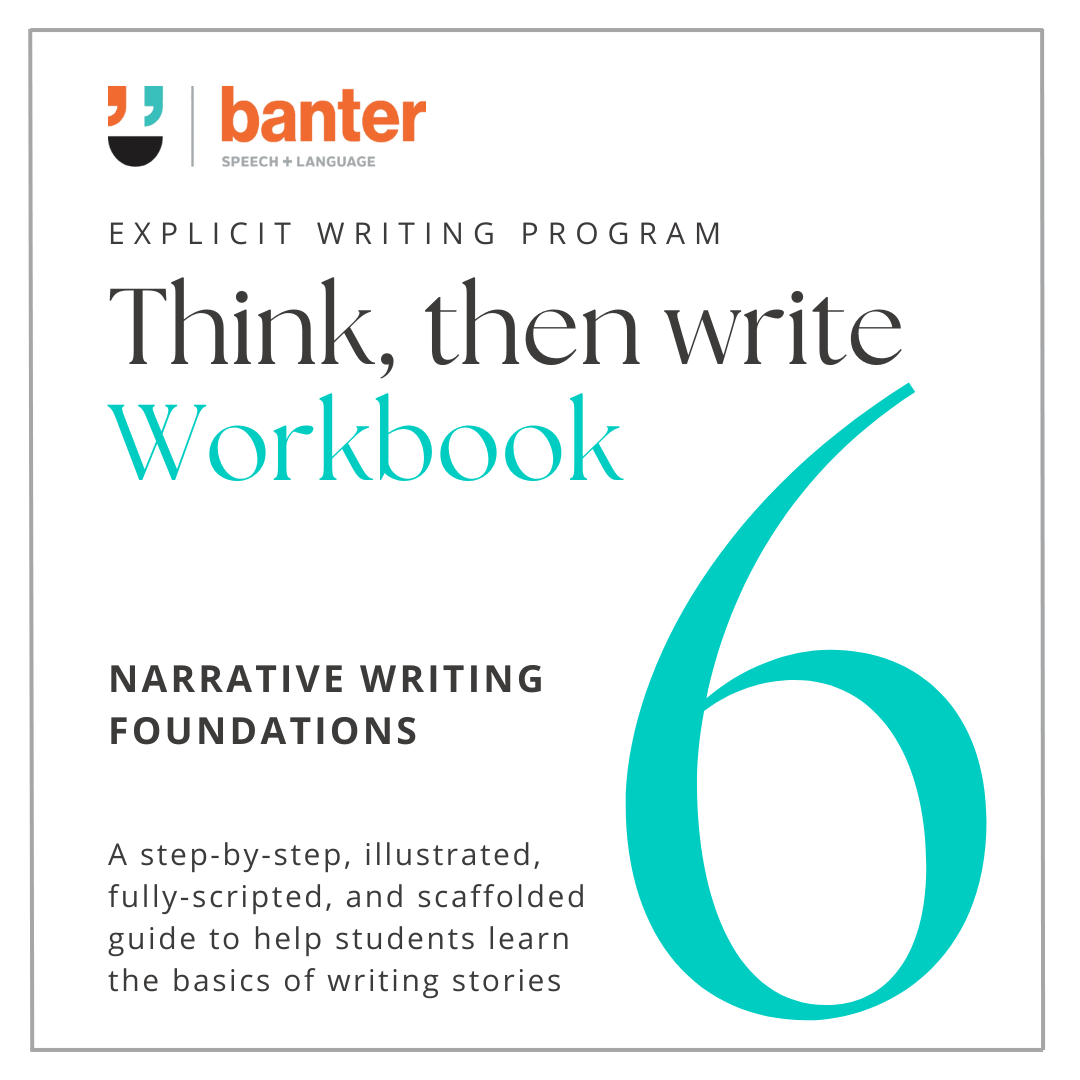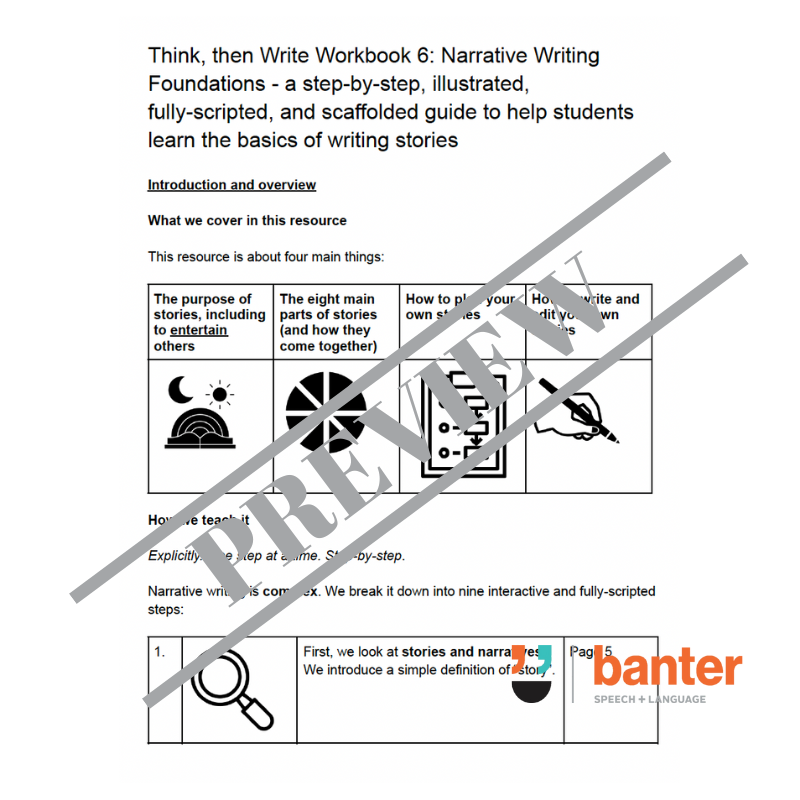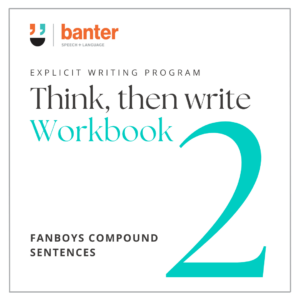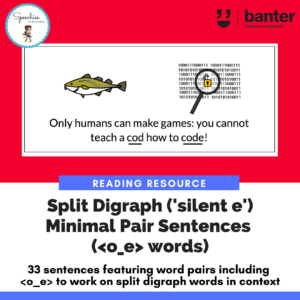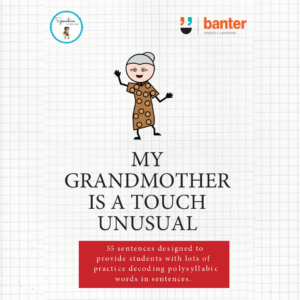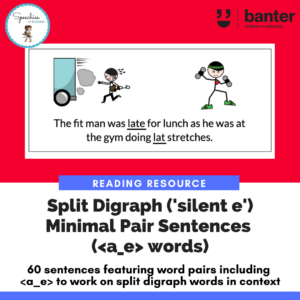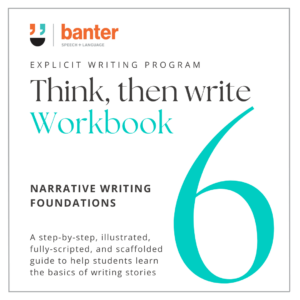(R807) Think Then Write Workbook 6: Narrative Writing Foundations
$50.00 including GST
Workbook 6 of our popular Think, Then Write explicit writing program is our Narrative Writing Foundations – scripted, illustrated and structured to teach students of different abilities to understand, think about, tell, and then write stories.
The 100-page resource is made up of ten modules and includes step-by-step scaffolds, models, visual prompts, and ideas to plan, write and edit stories.
Description
Think, then Write Workbook 6: Narrative Writing Foundations – a step-by-step, illustrated, fully-scripted, and scaffolded guide to help students learn the basics of writing stories (2nd edition)
What we cover in this resource
This 100-page digital resource is about four main things:
-
- The purpose of stories, including to entertain others
- The eight main parts of stories (and how they come together)
- How to plan your own stories
- How to write and edit your own stories
How we teach it
Explicitly. One step at a time. Step-by-step.
Narrative writing is complex. We break it down into ten interactive and fully-scripted steps:
1. First, we look at stories and narratives. We introduce a simple definition of “story”.
2. Second, we look at why people tell and write stories, including to entertain, and to inform others.
3. Third, we look at the three essential parts of a story: the main things you need to include to tell or write a good story, namely a problem, an action and a consequence.
4. Fourth, we:
-
- read some very simple stories together;
- break the stories down into their three key parts; and
- practice retelling the stories in our own words.
So you can see the three story parts in action, and how they work together, we then:
-
- review some story starters that suggest a problem and generate an action and consequence, completing the stories;
- retell each story;
- write each story; and
- edit each story.
5. Fifth, we read some classic stories together and identify the eight most important parts of a ‘true’ story. We introduce the Story Mapper to help us remember the parts of a story, and to learn how to break stories down into their parts.
6. Sixth, we show that narrative writing is a learnable skill. I make up a story, step-by-step, so you can see exactly how it is done.
We introduce evidence-informed writing scaffolds to make planning and writing stories easier. We:
-
- introduce a mnemonic (memory trick) to remember the eight parts of a story: “McSet is PROBably hot next to the FirePLACE.”)
- use a Story Mapper to plan our story;
- use a Main Character Goal and Obstacle Check to make sure our story has enough conflict to make it interesting;
- use a Transitions Helper to help connect the events in our story;
- use a Story Writer to help write my first draft; and
- use a STOPS Editing Scaffold to edit my first draft.
7. Seventh, we write a story together using the McSet mnemonic, the Story Mapper (with a pre-completed story plan), the Main Character Goal and Obstacle Check, the Transitions Helper, the Story Writer and the STOPS Editing Scaffold.
8. Eighth, it’s your turn to write a story independently. But, don’t worry! We’re still here to help if you need it!
If you have any trouble thinking of ideas or what to write, don’t worry! We’ve got you covered! We introduce three tools to get you going:
-
- the Story Starter;
- Eisner’s Story Prompter; and
- Booker’s Story Type Chooser.
We then support you to plan and write your very own story using the McSet mnemonic, the Story Mapper, the Main Character Goal and Obstacle Check, the Transitions Helper and Story Writer, and the STOPS Editing Scaffold.
9. Ninth:To become a master storyteller, you need lots of practice! You use the tools, mnemonics, and scaffolds to plan, write and edit more stories of your own.
10. Tenth, we provide some key references for further reading, and preview the next volume of Think, then Write Workbook 7: Persuasive Writing Foundations.
This plain English digital resource (PDF) is designed to be useful for older students of all abilities, including many students with language and other neurodevelopmental disorders. For more detail about narrative writing, check out our articles here and here and here.

